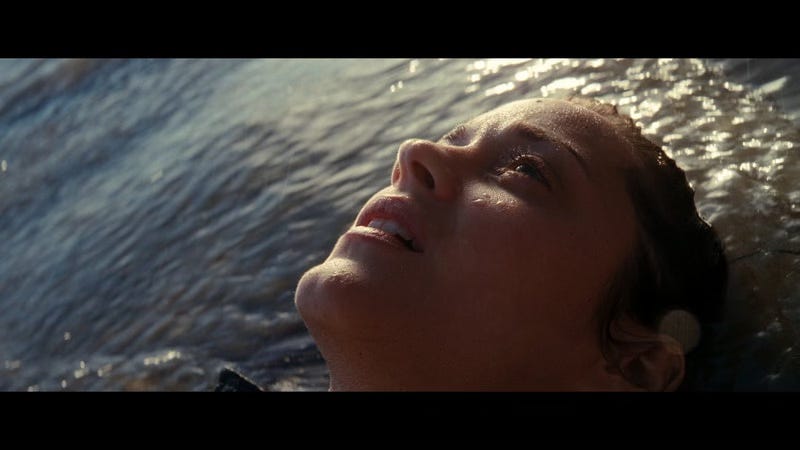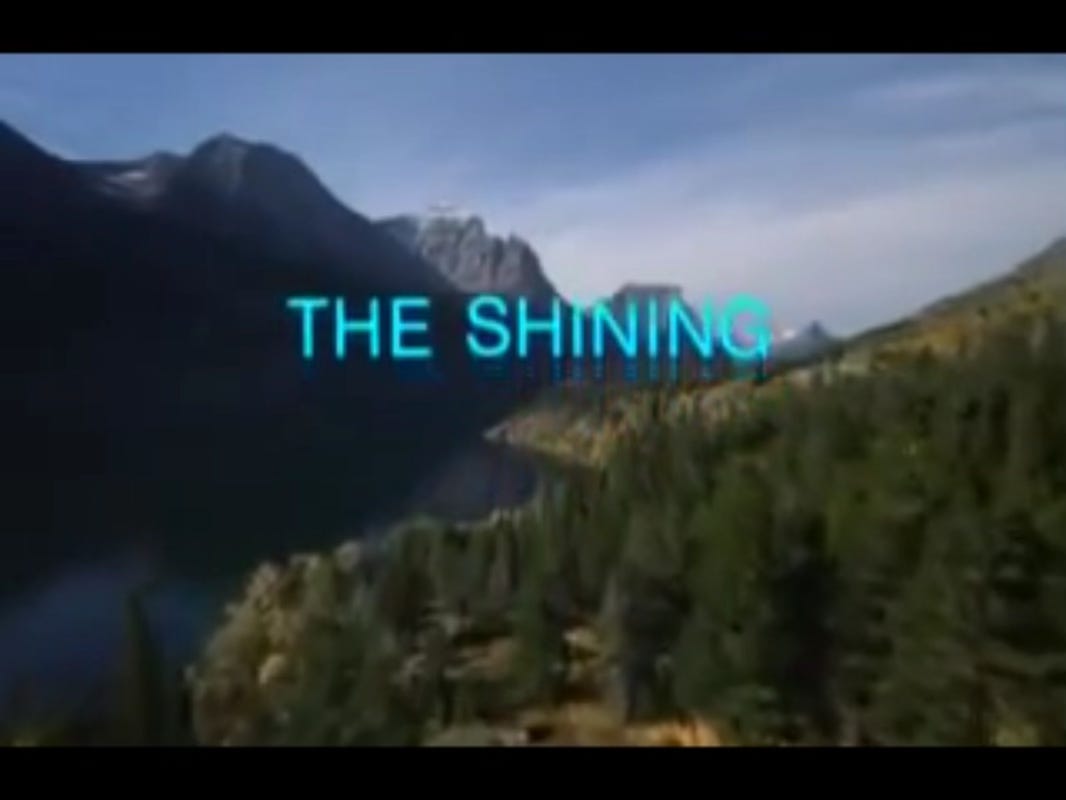We’re talking about how to use your summer movie viewing to give yourself a crash advanced course in novel writing.
The idea of OPENING IMAGE is one of the best screen tricks that novelists can steal.
Your mission this week is to look at the movies, TV and books that you watch or read for Opening Image.
In a film, you have an opening image by default, whether you plan it or not. It’s the first thing you see in the film! But good filmmakers will use that opening image to establish all kinds of things about the film: mood, tone, location, and especially theme.
(Can you guess the movie?)
Think of the opening image of Witness: the serene and isolated calm of wind over a wheat field. It’s the world of the Amish — the non-violent, unhurried world into which city violence will soon be introduced. It’s a great contrast with the next images to come; the chaos and noise of the city (and the reveal of the cemetery and the funeral gives a sense of life and death stakes). This is a great opening image because it’s so thematic, and also suggests the climax, part of which takes place in the grain silo: one villain is killed by the spill of grain.
The opening image of The Usual Suspects is a man taking a piss… a sly reference to Verbal and the whole movie “taking the piss” — as the British say — out of the audience.
The opening image of Silence of the Lambs is a dark, misty forest, through which Clarice is running as if in a dream.
The opening image of Romancing the Stone is a small, stuffy cabin — which after a tense confrontation between a voluptuous buckskin-clad heroine and sleazy villain straight from the old bodice-rippers, opens up to a classic, gorgeous Western landscape of magnificent buttes (pun intended) in a desert setting. It’s adventure and romance, which the voice-over narration also establishes as comic and tongue-in-cheek. It’s a great miniature of the whole story — this is our protagonist Joan Wilder’s fantasy, which quickly becomes her not-so-appealing reality.
The opening image(s) of Notting Hill is a montage of movie star Anna Scott’s career: newspaper headlines, magazine spreads, photo shoots, paparazzi tailing her at premieres and the Oscars. This montage sets up this story’s unusual antagonist; it’s Anna’s fame that is the constant opposition to Will and Anna’s love, and the storytellers make that fame concrete and vivid in these images.
The opening image of New in Town is a frozen, wintry landscape, symbolizing the heroine’s frozen emotions, and then the first scene shows a group of three women scrapbooking and talking about the fate of the new plant manager, a scene that brings to mind the three Norns, or Fates, of Scandinavian myth.
Well, novelists, instead of (or in addition to) killing yourselves trying to concoct a great first line (which can get so self-conscious it may just as likely annoy a reader into throwing your book against the wall as make them keep reading), how about giving some thought to what your opening scene looks like? It takes a lot of the pressure off that first page anxiety — because you're focused on conveying a powerful image that will intrigue and entice the reader into the book.
What do we see? How does it make us feel? How might it even be a miniature code of what the whole story is about?
Take a look at a few of the films on your Master List and see what they do with the opening image. Again, bear in mind that the opening image may be more of an opening scene — and the key image may not be the very first thing we see.
For example, in Casino, the film starts with DeNiro walking out to his car with narration over. Then as he gets in, the car explodes in flame — and the credits sequence begins with the visual underneath, which is a long, long take on a cut-out of a man falling slowly through flame: a descent into hell. That falling through flame, with the blinking neon of the casino all around, would be the opening image, the symbolic visual Scorsese has chosen to fix in the audience’s mind — it is exactly what the story is about.
One of my favorite opening images/sequences is the credits scene of The Shining. I don’t think there’s a creepier opening to be found anywhere in film. It’s all aerial camerawork of those vast, foreboding mountains as that tiny little car drives up, up, up toward what turns out to be the Overlook Hotel. It’s vertiginous, it’s ominous, it emphasizes the utter isolation of the hotel and the circumstances, and somehow, through the music and the visuals and the constant movement, Kubrick establishes a sense of huge, vast, and malevolent natural forces. As a thriller writer (or whatever you want to call me), I am constantly looking for ways to convey all those things — that experience — on the page.
Mo Hayder’s novel The Treatment is one of my favorite novel examples … when in that book she focuses on a murder of crows strutting on the grass of a crime scene, evil just rolls off the page, and you start to wonder if you really want to keep reading the book. (It’s worth every shudder, but don’t say I didn’t warn you.)
Find more descriptions of OPENING IMAGES in each of these movie breakdown posts:
Here’s another great film technique to be aware of:
The Opening Image will sometimes —often — set up a location that will return in the Final Battle scene or in the Resolution scene of the story.
Only at the end there will be a big visual contrast to show how much the hero/ine has changed.
A fantastic example of this is in the truly lovely animated film How to Train Your Dragon (I haven’t seen the live action version yet!). It opens with a long aerial swoop down into the Viking village. It’s dark, torchlit, forbidding … and then smashes into the opening attack by dragons, a scene of chaos and violence. And we hear young protagonist Hiccup’s wry narration over it.
In the RESOLUTION we see the same aerial swoop into the village, but now it’s daylight, sunshine, flowers — and instead of attacking, the dragons are flying with their new — well, not owners, but partners: the same Vikings who were fighting them in the beginning. And Hiccup’s wry final narration is the almost exactly the same monologue as his opening narration, with only a few key words changed. The whole village has been transformed by Hiccup’s personal journey; it’s a magnificent visual of not just CHARACTER ARC (from misfit to leader) — but also of the change in philosophy of the whole Viking society (from warring and miserable to peaceful and prosperous).
Now, look, I’m not at all saying that an opening scene has to be visual to work. I had a student in a workshop who opened her romantic comedy with a series of dueling press releases. It was hilarious and perfect for her very funny book. As authors, we have the luxury of not having to convey things purely visually.
I’m just saying, if you’re struggling with an opening, this could be a technique that might help you pull it all together. It works wonders for me. And thinking of the opening visually instantly solves the problem that I’ve become increasingly aware of in the opening chapters of newer writers: they fail to set up the visual in any way, which leaves the reader floundering to figure out where the hell they are. Not an auspicious way to begin, let me tell you.
As human beings we are primarily visual creatures (and no, I don’t just mean men. All of us). So? Use it!
So this week, when you’re viewing or reading - pay attention to the very first seconds,, and then the very first scene, and try answering these questions/prompts:
OPENING IMAGE/OPENING SCENE
Describe the OPENING IMAGE and/or opening scene of the story.
What MOOD, TONE, and GENRE(s) does it set up? How does it do that?
What kinds of experiences does it hint at or promise? (Look at colors, music, pace, visuals, location, dialogue, symbols, etc.).
Does the opening image or scene mirror the closing image or scene? (It’s not mandatory, but it’s a useful technique, often used.) How are the two different? What does that say thematically?
And to go further:
Make a list. Visual or not visual — what are some of your favorite book and movie openings of all time?
Now look at your own opening pages. Are they visual? Do we know where we are? Can you make that location, and the things we see in it, thematically meaningful?
I’d love to hear what you discover in some of your favorites!
Alex
All material © Alexandra Sokoloff, Screenwriting Tricks for Authors
Why subscribe?
Screenwriting Tricks for Authors is a reader-supported publication. Please consider contributing to this work by becoming a free or paid subscriber!
Get the workbooks!
Stealing Hollywood has all the material of the workshops, with story examples and elements from all genres.
Writing Love has all the material of the workshops, with more story examples and elements specific to romance and love stories.
Stealing Hollywood ebook, $4.99, also available as large format print workbook
Writing Love ebook, $2.99
Need some help? The Screenwriting Tricks for Authors workshop is available online, as a self-paced course with all the videos, assignments, movie breakdowns and personalized feedback you need to get that book written this year, 15 minutes at time.
In three parts, and you only pay for what you use.
If you have a first draft of a book or script already, or need more feedback, get targeted help getting you over the finish line in The Writers’ Room.







I've got a great one for this book. My poet visits his haunt, L'Enfer, walking through the devil's mouth.
The montage at the start of the film Performance is a favorite. The wicked credits at the start of Dexter. The opening of The English Patient with the plane flying over all the dead lovers of the world.
The opening of Shirley Jackson's The Haunting of Hill House.
Thank you for leaving politics out of this post.